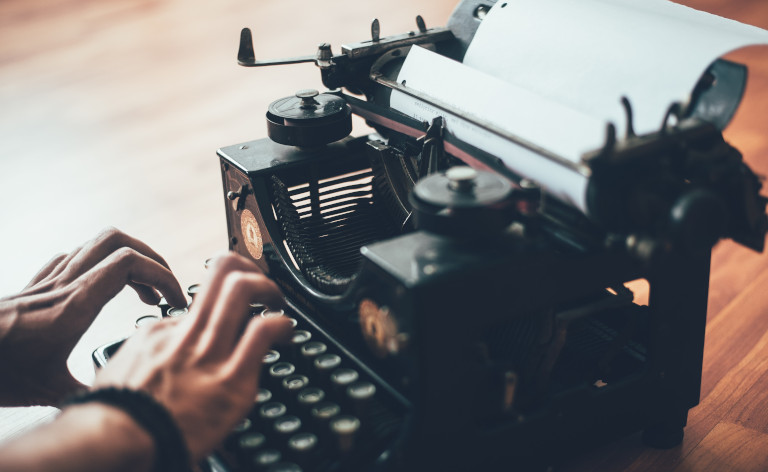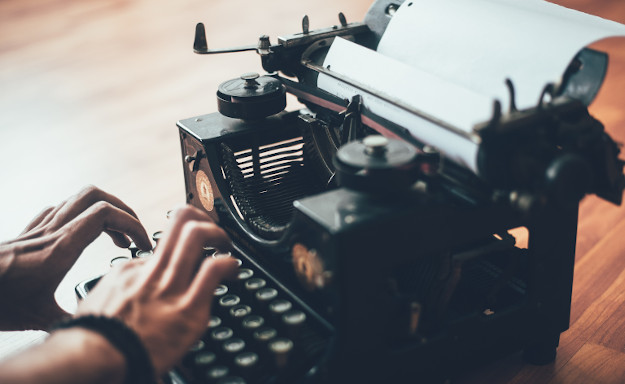
Of course you want your novel to have a killer plot, right? But what does that even mean? A good place to start is figuring out what the whole concept of “plot” means. After that, you want to know what sorts of tips and strategies make for a compelling plot to fully engage your readers and keep them turning pages. And finally, it’s helpful to know about a number of archetypal story plots that can give you a more solid framework to work with in developing your novel’s story.
Your Novel’s Killer Plot: First, the Basics
Let’s start with the absolute basics. Think of the plot of your novel having its own arc or phases that it moves through – a kind of flow. Most plot structures move through the following five stages as identified by 19th-century novelist Gustav Freytag:
- Setting the Stage: In literary language this is often referred to as exposition. The beginning of the story is going to lay out a bunch of basic details – the main character and at least some of the important supporting characters, the primary setting of where a lot of the story will take place, and what the initial key conflict is that will drive the action of the story.
- Building it Up: Next comes a phase often called rising action where you give more details and actions around the driving conflict the main characters is experiencing and greater complexities are introduced into the story.
- Reaching the Peak: At some point there will be a key climax where a major event takes place that pits the main character against the biggest challenge, fear, or other aspect the driving conflict presents. This would be the most exciting, dramatic, action-filled phase of your novel’s story.
- Winding it Down: After the climax comes a phase of falling action where the storyline begins to slow down as it heads toward the end.
- Wrapping it Up: Ending your novel is a phase that can be called the conclusion, resolution or, if you want to be fancy about it, the denouement (a French word). You tie up as many loose ends as you want (though you may leave something unresolved in order to set the stage for a follow-up novel if you have a series in mind) and end the story.
With this understanding of plot basics, we can go on to lay out some tips and strategies to transform your novel’s storyline into a killer plot.
What Makes for a Killer Plot?
There are many ways to add some pizazz and flair to your plot to vault it into “killer plot” status. Here are a few ideas to keep in mind:
- Mystery and Curiosity: One way to keep readers engaged is to make sure various characters do things that make readers wonder why they did those things. In other words, you add in elements and actions that make readers curious; your raise questions readers will want answered. Doing this will definitely keep readers turning pages to find out answers to these questions and to see what happens next.
- Twists and Surprises: It’s always a good thing to throw in a few twists or surprises along the way. These are things that take readers aback with a “Whoa, I didn’t see that coming” kind of reaction. This is especially important to do if you choose one of the basic story plots outlined later in this article. Those are very useful in terms of giving you an initial framework to focus your developing story, but need to be spiced up a bit if you want to achieve “killer plot” status. There can be some clichés and common tropes in your story, but if the whole thing feels that way, you won’t be doing yourself or your readers any favors.
- Consistency in Logic: Make sure the world you weave in your novel is consistent in terms of obeying its own internal logic, whatever that might be. This might sound like it goes against the notion of including twists and surprises, but it doesn’t if you blend both together carefully. Characters can always make surprising choices even while being consistent within the world they inhabit.
- Subplots and Cohesion: If you start exploring subplots, that’s fine because they can add some extra layers, complications, and insights into your novel’s main themes, but just make sure everything still fits squarely within the main arc of your story. If you let yourself go too far down the rabbit holes of subplots, you might find yourself having difficulty tying them back into the main story in a meaningful way. What you don’t want is a subplot that becomes a distraction from the main story – you want it to support the main story.
- Character Motivation: It’s also useful to always be asking yourself what each character wants. Every character at any given moment wants something, and their pursuit of what they want helps define their character and makes them relatable. What they want might also change over time. So, there can be a big-picture level of character motivation that defines their role in the overall story, and there can also be plenty of smaller motivations that apply in any given scene.
- Scene Purpose: When you sit down to write a scene of your novel, first ask yourself what the purpose of the scene is. By defining what you want the scene to accomplish in terms of telling the story, you’ll have greater clarity about what you need to write for that scene.
Now that you understand the big picture of what a plot is, as well as ways to keep it compelling and interesting for readers, now you explore how one of the nine basic story plots can help you get started.
Choosing a Framework from Nine Basic Story Plots
People who have studied all kinds of stories from different places and times have come to realize that almost any novel (or movie or play) tends to fit fairly easily into one of nine different story plot archetypes. These have been described in detail by Christopher Booker in The Seven Basic Plots: Why We Tell Stories. There’s only one problem with his book: It’s 700+ pages! Also, Booker identifies nine plots, but he personally only really likes seven of them (hence the title of his book).
Luckily, these story archetypes can be summarized. If you’re having trouble getting started with your novel because you’re not sure how the plot should unfold, choosing one of these basic story plots can be invaluable in helping you move forward. Each one is a kind of framework you can adopt and run with. In some cases, you might even combine two or more in your novel. But start with one that feels right and see where it goes.
We’ve presented these basic plots before in our series about writing fantasy novels, so we’re not going to go through the details of each one again here, so take a moment and read Finding a Story Idea for Your Fantasy Novel. It doesn’t matter that the article is geared towards fantasy novels – the descriptions of the nine basic plots apply to novels of all genres and subgenres.
Now that you know about the nine basic story plots, can you see how one of them might be the right choice for you to turn into your novel’s killer plot? Below you’ll find the nine basic plots listed out with examples of novels or plays that exemplify each one – many of which have also been made into movies:
- Overcoming the Monster: Examples abound of this one in the genres of fantasy, horror, science fiction and more, such as The War of the Worlds by H.G. Wells, The Guns of Navarone by Alistair MacLean, and Casino Royale by Ian Fleming (and most other James Bond novels).
- Rags to Riches: David Copperfield by Charles Dickens, Jane Eyre by Charlotte Brontë, and Great Expectations by Charles Dickens.
- Quest: The Lord of the Rings trilogy is a well-known example of a quest, with the twist that the goal is to get rid of an object rather than find it. Other examples include The Pilgrim’s Progress by John Bunyan, and Watership Down by Richard Adams.
- Voyage and Return: Lots of examples to point to here, including Alice’s Adventures in Wonderland by Lewis Carroll, The Wonderful Wizard of Oz by Frank L. Baum, and The Chronicles of Narnia by C.S. Lewis.
- Comedy: Some examples of this one include Bridget Jones’s Diary by Helen Fielding and Much Ado About Nothing by William Shakespeare.
- Tragedy: Examples here include Macbeth by William Shakespeare, The Picture of Dorian Gray by Oscar Wilde, and Anna Karenina by Leo Tolstoy.
- Rebirth: One of the best-known examples of this plot is A Christmas Carol by Charles Dickens. Others include The Secret Garden by Frances Hodgson Burnett and Peer Gynt by Henrik Ibsen.
- Mystery: The mystery plot is a relative newcomer on the scene in terms of being an archetype, but became hugely popular in the form of detective novels. Examples include The Complete Sherlock Holmes by Sir Arthur Conan Doyle, The Maltese Falcon by Dashiell Hammett, and The Mysterious Affair at Styles by Agatha Christie (her first of many).
- Rebellion Against The One: This basic story plot is often the one used in dystopian fiction. Examples that come to mind include The Handmaid’s Tale by Margaret Atwood, The Hunger Games trilogy by Suzanne Collins, and Nineteen Eighty-Four by George Orwell.
This article has given most everything you need to produce a killer plot for your novel: An understanding of plot basics, tips and tricks to spice it up, and nine potential archetypal story plots you can use as a framework for your unique story to get started. Good luck!
Try tooleybook, the free tool created for writing books. It takes less than 30 seconds to create an account and start writing.
With tooleybook you can view timelines, chapter purpose, word count, track time and place, tag scenes, move and organize scenes and more...More Info



With all the doggone snow we have had as of late I am stuck indoors, fortunately there is the internet, thanks for giving me something to do.